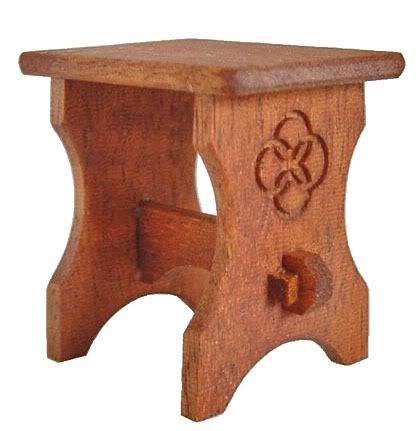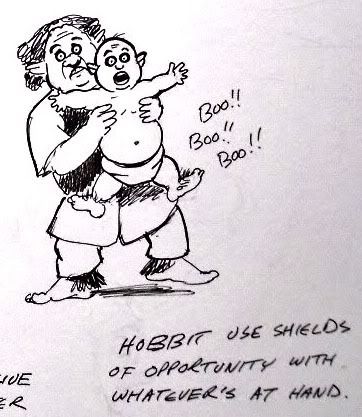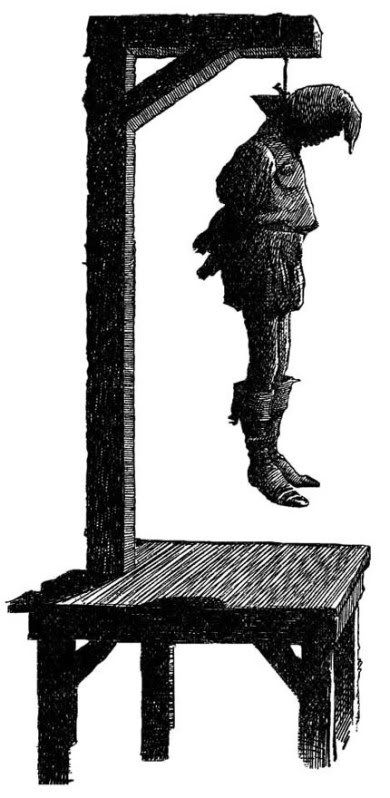
Imagine an adventuring party consisting of Josey Wales, Rooster Cogburn, Brisco County jr, James West, and Jonah Hex, daring black mesas riddled with undead-haunted mines, lost and buried cities of the ancients, ghost towns, goblin infested badlands, cruel black mountains, and pitiless miles of open range, driven by the remorseless ecstasy of gold.
Starting from a base of Advanced Dungeons & Dragons standard rule set, with the following modifications. Rules default to AD&D in all cases not specifically altered.
Initiative may be either individual or group based depending upon circumstances. If the party is alert and moving as a group, then standard AD&D initiative determination applies. If the party is dispersed somewhat, engaged in various tasks, not immediately expecting attack, but not surprised, initiative is determined individually. Each character, npc, and monster involved rolls 1D20 + Dexterity bonus to determine order of actions.
Player Character armor class, (difficulty to hit), is determined by class, level and dexterity bonus if applicable, rather than by physical armor worn. Nothing bullet proof can be worn for any length of time, so little armor is used in the weird west. Each character class has a base AC bonus, this bonus increases with level to reflect the character’s accumulated experience in avoiding gettin’ shot.
The chance to hit with a gun at short range is determined by the AD&D melee combat charts. Almost all gun battles will occur at distances of less than twenty feet between combatants, so the majority of gun fights will be rolled for as “short range”. Medium and Long range shooting is modified by weapon type and character class. Non Fighter classes incur penalties when shooting at medium and long range targets.
Firearms are bolt action, single action, double action, lever action, or pump action, plus break open shotguns. Only Fighter Class characters can fire multiple shots per round. This is determined by the AD&D fighter’s level/attacks per round. Level 1-6, one shot/attack per round, level 7-12, three shots/attacks every two rounds, level 13 and up, two shots/attacks per round.
Firearm stats.
Derringer type pocket pistols do 1D4 dmg, +1 to hit at Medium range, +0 at Long range
Full-size handguns do 1D8 dmg, +1 to hit at Medium range, +0 at Long range
Shotguns do 1D10 dmg, +2 to hit at Medium range, +0 at Long range
Sawed off shotguns do 1D8 dmg, +1 to hit at Short/melee range, +0 at Medium range, +0 at Long range
Long guns/shoulder arms do 2D8 dmg, +2 to hit at Medium range, +1 at Long range
Dynamite sticks do 6D6 dmg, a save for half damage is possible if detonation is at least 10’ distant.
All melee weapons do damage per AD&D rules.

When gunfire damage is rolled after a successful hit, maximum damage indicates a
kill shot, instant death. This applies to monsters, NPCs, and Player Characters alike. Characters, NPCs, and monsters above third level and/or three hit dice may attempt to Save vs. Death against a kill shot. Those who succeed take damage only and are not killed. Unique supernatural Monsters of the Abomination class, certain sorts of undead, and creatures with 11 or above hit dice are also immune from death by kill shot.
Classes include the Fighter, the Thinker, the Manipulator, and the No-Account. These classes are very broad archetypes just as are the AD&D classes.
Character generation follows AD&D rules. Character stats remain the same.
The Fighter The fighter primarily makes his way in the world with his fists and his gun. Current and former military men of any sort, cowboys, roustabouts, athletes, brawlers, any person who is generally more disposed towards physical action over cerebral consideration, will fall under the “Fighter” category.
The T&S fighter has the same class requirements and advantages as the AD&D fighter. They attack on the AD&D fighter melee chart. They gain levels according to the AD&D fighter progression. They roll 1D10 per level for hit points, and also roll saving throws as AD&D fighters. Any sort of weapon is usable by fighters.
Torch & Sixgun fighters operate with the following alterations.
Fighters start with a base armor class of 8. This number drops by one for each experience level gained up to, and including the sixth. Thereafter, by one for every two levels gained.
A fighter may have a natural talent for a particular type of weapon. This gains him a +1 to hit with that type of weapon only. This bonus is very specific, as example, a pistol, not all guns, a saber, and not all melee weapons.
A fighter may make a
called shot at third level and above. A called shot can only be taken when the fighter has time to line it up, such as with surprise or initiative, and not during melee or in melee range. A successful called shot is not necessarily a kill shot. It merely indicates the fighter hit exactly what he was aiming at. Damage is rolled normally and a kill shot may or may not result. Secondary results of the hit are for the DM to decide.
A fighter with a constitution score of 15 or above has
got grit. This means that the fighter’s Hit Point Adjustment bonus may be subtracted from damage the character takes, in addition to adding to his hit point total. The grit bonus may not be applied to a kill shot that would have slain a character otherwise.
Yeh git shot in the face, son, an yer still gonna be stone daid.
 The Thinker
The ThinkerThe thinker primarily makes his way in the world with his mind. Scientists, engineers, doctors, scholars and academics, as well as sorcerers and preachers, any type of person who is generally more disposed to forethought and mental solutions over immediate physical action belongs to the Thinker character class.
The T&S thinker has generally the same class requirements and advantages as the AD&D magic-user. They attack on the magic-user melee chart. They gain levels according to the AD&D magic-user progression. They roll 1D6 per level for hit points, and roll saving throws as AD&D magic-users.
A thinker starts with a base armor class of 10. This number drops by one for every level up to and including the fifth. Thereafter the thinker’s AC improves by one step for every two levels of experience.
A thinker class character may
familiarize himself with one weapon for every three levels of experience. A thinker may attempt to use any weapon, however, he suffers a -3 to hit penalty with any weapon he is not familiar with. A familiar weapon may be employed without penalty.
A thinker possesses the abilities of a Sage, as defined in the AD&D Dungeon Master’s Guide under expert hirelings, pg 31.
Added to this rule set for Player Character thinkers, the character’s Intelligence score carries a bonus that increases the number of minor fields of study the thinker has expertise in. An Intelligence score of 15 adds +1 minor field, 16 adds +2, 17 adds +3, 18 adds +4.
The ManipulatorThe manipulator primarily makes his way in the world by influencing others to gain his ends. Gamblers, hucksters, snake oil salesmen, Politians, saloon girls, fancy-dans, merchants and traders all fall within the manipulator class. Any person who prefers to maneuver others into serving his ends rather than directly acting himself falls under the manipulator character class.
The manipulator has generally the same class requirements and advantages as the AD&D cleric. They attack on the AD&D cleric melee chart. They gain levels according to the AD&D cleric level progression. They roll 1D8 per level for hit points, and save as AD&D clerics. A manipulator starts with a base armor class of 9. This number drops by one for every level up to and including the fifth. Thereafter the manipulator’s AC improves by one step for every two levels of experience.
A manipulator must have a Wisdom score of at least 10. A manipulator may use pistols and handguns without penalty. Long guns, shot guns and heavy weapons incur a -3 to hit penalty.
A manipulator is capable of
slick talking. This operates in a manner similar to the AD&D magic-user spell “suggestion”. By slick talking, the manipulator can often convince a listener of the wisdom of following a course of action that may or may not be the best idea for the listener, but will certainly benefit the manipulator. The object of a manipulator’s power of persuasion must save vs. spell or fall for the manipulator’s spiel.
If the manipulator’s target possesses a Wisdom score bonus, it is applied to the saving throw.
A person who is slick talked into a course of action that then turns out badly for the manipulator’s target, that person gains a +4 bonus against future attempts at slick talking.
If a manipulator attempts to slick talk a crowd, (a group of 5 or more), the crowd saves as its lowest level or hit die member. This is why Politian is a preferred avocation for the manipulator.
When engaging in games of chance where misdirection is a factor, the manipulator is at an advantage in being able to roll twice and choose the better number in any situation where the dice determine an in-game out come. This applies to in-game betting and gambling.
 The No-Account
The No-AccountThe no-account primarily makes his way in the world by leaching off of others and avoiding work himself. Thieves of all sorts, lay-a-bouts, hangers-on, drifters, shiftless shirkers, rustlers and claim-jumpers, any person who habitually appropriates the wealth of others without direct conflict falls under the no-account character class.
The no-account has generally the same class requirements and advantages as the AD&D thief. They attack on the AD&D thief melee chart. They gain levels according to the AD&D thief level progression. They roll 1D6 per level for hit points, and save as AD&D thieves. The no-account starts with a base armor class of 9. This number drops by one for every level up to and including the fifth. Thereafter the no-account’s AC improves by one step for every two levels of experience.
Somewhat ironically, in their pursuit of gain without the need of honest work, no-accounts often develop specialized skills. A no-account rolls 1D8 at character creation to determine how many of the AD&D thief skills he possesses. Then rolls again to determine which skills he knows. 1-Pick Pockets, 2-Open Locks, 3-Find/Remove Traps, 4-Move Silently, 5-Hide in Shadows, 6-Hear Noise, 7-Climb Walls, 8-Read Languages. These skills are administered according to AD&D rules.
All character classes are guidelines and subject to alteration to satisfy player needs for particular PC designs. Any abilities, bonuses or penalties given as a result will deviate minimally from the standard.
 Once upon a time, in the Ancient West
Once upon a time, in the Ancient West. Setting description.
No back history, no timeline, no specific date the campaign starts on. The game is meant to exist in a sort of Western Mythic Now. So, any event, technology, story, history, or person, fictional or otherwise, who exists at any point in a time frame from 1840-1900, can appear in the Weird West.
The campaign map covers all of North America between the Appalachians and the Rockies. That the rest of the world may be out there may be implied by inference due to the presence of people from other parts of the world. They are there, however, to fill various character roles traditional in westerns. The campaign won’t leave the West.
Magic items are always singular, or else extremely rare. As an example, consider the Ace of Winchesters from Hitman #16, (Garth Ennis & John McCrea), a rifle, “fashioned of halo-steel and hades-gems, bound with ivory of saints, designed to blast the very life from fiends…”.
Supernatural weapons and items will be unique and usually meant to serve a certain purpose. They will also have a severely limited number of uses before they are burned out.
Hit point recovery will also follow AD&D standard. One hit point restored per day of rest, four weeks rest returns hit points to maximum regardless.
Henchmen and hirelings become Sidekicks and Hired Hands.
New and altered AD&D monsters for Torch & Sixgun.Unique
dragons via the dragon generator, (which I’m considering updating)
The Painted Unicorn. I have this idea of an appaloosa unicorn roaming the Great Plains. No one who has ever taken a life can approach it unnoticed.
Yigs, Yig-sons. The yuan-ti reskinned as remnants of an ancient race of serpent men. From their hidden city beneath the Cerulean Mountain, the Yigs send out their most human like members to infiltrate human towns in order to bring back slaves, sacrifices, and… food.
Spirits of Place. Watering hole weirds, sand storm devils, ill winds, avalanche gremlins, etc…
Non standard undead. The Sundown Wailers, The Wagon Train, The Mountain Man.
Degenerate Ancients. In hidden cities and lost valleys. Malignant survivors of lost civilizations.
Badland Goblins. Fused with Quickling stats. Spare, boney, blindingly fast, and mercilessly cruel. “If them goblins gets aholt ah yeh, they’ll string you up by yurh thumbs and skin yeh with their teeth, boy!”
The Damned Stallion. Outside of Laerdin, there’s miles of black prairie. Apparently burned by fire years ago, it never regrows and yet the charred grass never crumbles away. The locals say a great bronze colored stallion courses the black prairie and that those who die out there, must ride the stallion to Hell.
And of course, a steady stream of regular old conniving, black hearted, rat-bastard scum.
**********
This is my start on a bolt-on house rule set for weird western adventure on an AD&D platform. I watched The Outlaw Josey Wales a couple weeks ago, and then just kept running into westerns on TV. The Good, the Bad, and the Ugly, El Dorado, High Plains Drifter, Open Range, Unforgiven. The really good westerns. I kept smelling mental gunsmoke and hearing the rutch of boots on dirty pine plank floors. Also, a couple of the guys at the part time job are into cowboy shooting and western reenactment. They have a lot to say about horses and shooting. The Wild West themes just sort of sank down and melded with the AD&D dungeoneering ethos I look at rpgs through.
I think I want something gritty and dangerous. I expect PCs to die fairly often. I’ll come up with something for army surgeons, folk remedies, country doctors and such, but I don’t think I’ll have any sort of commonly available “healing”, magic or otherwise.
I’m a bit leery of the degree to which the weird western tale has been infused with contemporary steampunk these days. I want stone cold gunslingers and horrific monsters in this campaign. No wacky inventions, steam robots, crazy professors or airships. I love Victorian era and classic science fiction, I cut my mind’s eye teeth on it, but the reimagining of it in steampunk has reached the point where it’s become self-referential and incorporated way too many modern attitudes. It’s disconnected from its source material to the point of caricature. Steampunk has become WOTC Jules Verne.
I want The Man with No Name with a cigar in his teeth in a desperate gun battle with blasphemous gibbering things in a maze of black tunnels beneath an ancient mesa.
I reckon I’ll whittle on this here rule set a mite bit longer, see what shapes up.































